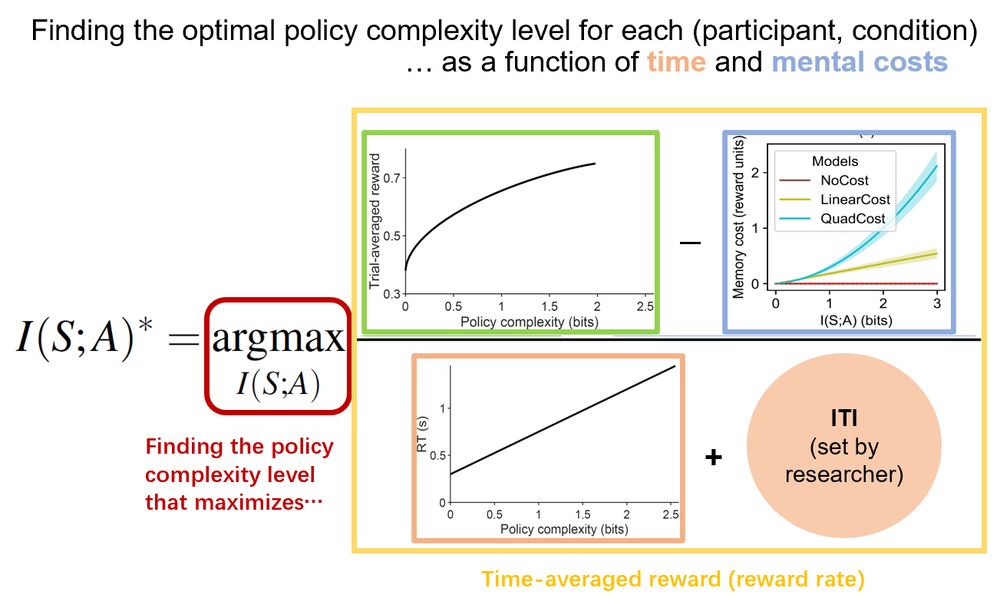


For those interested, we also have an earlier JEP:G paper, which inspired the mental cost modeling in our CogSci submission:
gershmanlab.com/pubs/Liu25.pdf
For those interested, we also have an earlier JEP:G paper, which inspired the mental cost modeling in our CogSci submission:
gershmanlab.com/pubs/Liu25.pdf



1) Sensory noise increases in multisensory trials, likely due to divided attention;
2) Auditory observations are stretched according to the visual range, suggesting spontaneous cross-modal recalibration in humans.
1) Sensory noise increases in multisensory trials, likely due to divided attention;
2) Auditory observations are stretched according to the visual range, suggesting spontaneous cross-modal recalibration in humans.
1) Human priors are non-Gaussian;
2) Sensory noise is heteroskedastic, dipping centrally and plateauing peripherally;
3) Both model averaging (optimal) and probability matching fit behavior well.

1) Human priors are non-Gaussian;
2) Sensory noise is heteroskedastic, dipping centrally and plateauing peripherally;
3) Both model averaging (optimal) and probability matching fit behavior well.

1) Connects seemingly disparate cognitive measures: state-dependence v. RT, goal-directed v. habitual behavior;
2) Prescribes task-general insight via normative principles;
3) Highlights the utility of incorporating multiple resource formulations in resource-rational studies!
1) Connects seemingly disparate cognitive measures: state-dependence v. RT, goal-directed v. habitual behavior;
2) Prescribes task-general insight via normative principles;
3) Highlights the utility of incorporating multiple resource formulations in resource-rational studies!





